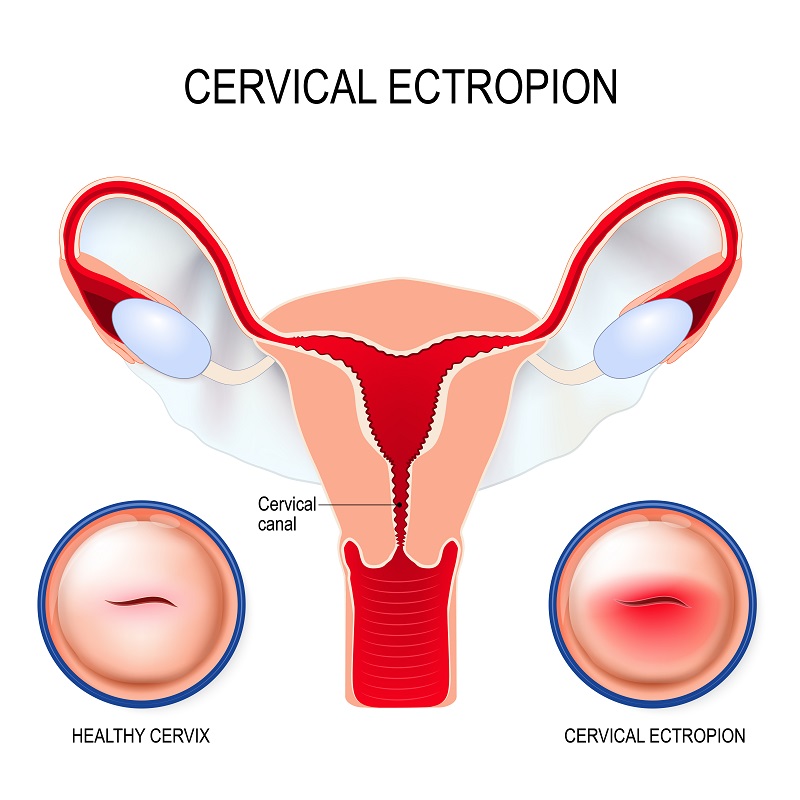
Cervical ectropion, also known as cervical ectopy, occurs when the glandular cells (or soft cells) inside the cervical canal spread to the exterior of the cervix. This region normally has epithelial or hard cells. The cervix is where the vagina and uterus connect. When this condition appears, the area where the two types of cells converge is known as the transformation zone.
Is Cervical Ectropion Dangerous?
Cervical ectropion is also sometimes referred to as cervical erosion. This is not accurate because your cervix is not eroding. The condition is common among women who are of childbearing age. It does not affect fertility and does not cause cancer. It’s not classified as a disease.
Cervical Ectropion Symptoms
While cervical ectropion is no reason to panic, it can come with some unpleasant side effects. Most women report no symptoms. In fact, many are not aware they have the condition until their gynecologist examines them. Those who experience symptoms usually notice:
- Spotting outside of their normal period
- A light mucus discharge
- Pain during or after intercourse
- Bleeding during or after intercourse
In severe cases, symptoms can impact a woman’s ability to enjoy sexual intercourse.
Cervical Ectropion Diagnosis
A Pap test and routine pelvic exam allow your doctor to determine if you have cervical ectropion. It’s important to get a diagnosis if you experience symptoms. Some symptoms may indicate other problems like an infection, fibroids, endometriosis, or cancer. Contact your Women’s Health OB/GYN today to schedule an exam.
